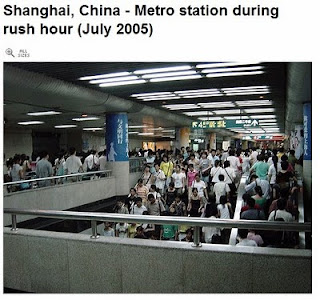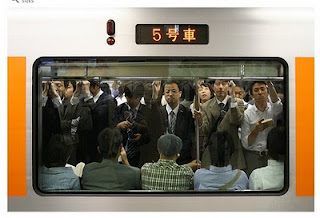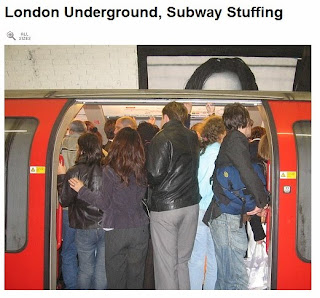Recently, there was an article that I read which mentioned that Shanghai Metro hired officials to ensure people stand in lines and use the Metro. I felt it could possibly be in Delhi Metro. I read the article twice and it turned out to be true that indeed it was Shanghai Metro.
I was shocked. I only could think of this in India. But Shanghai, Tokyo, Moscow, London are plagued with the same problem. Shanghai Metro Center INCREASED THE FREQUENCY OF TRAINS AND REDUCED WAITING TIME TO 3 MINUTES and YET THE OVERCROWDING DIDN'T STOP and SO INTRODUCED PARALLEL BUS SERVICE IN ORDER TO INTEGRATE..BUT THAT DIDN'T HELP BECAUSE VERY FEW GO TO BUSES.
Shanghai Metro experiences terrible crowd during 7 am - 9 am and it is quite obvious why (because everyone wants to head to their respective offices). The article further mentioned that it is JUST 2 YEARS AGO THAT THE METRO STARTED OPENING ALL NEW LINES AND IT IS 70% OVERCROWDED AT PEAK TIMES and 30% OVERCROWDED ALL THE OTHER TIMES. THERE IS FREQUENT DELAY OF TRAINS BECAUSE DOORS WON'T CLOSE BECAUSE OF THE HEAVY CROWD.
Not sure, which country...but surely some country outside India and in South East Asia.
Not sure, which country...but surely some country outside India and in South East Asia.
(Images Courtesy: LINK, Google images, skyscrapercity)
SHANGHAI
Let's look at TOKYO
Let's Look at Tube (LONDON)
So, how about DELHI METRO?
This specially happens at RAJIV CHOWK (Connaught Place) because it is the main interchange lines. There are of course 2 more points which need to yet open and once open the overcrowding would stop here. If you closely monitor the newspaper cut out above, you will notice that Line 3 has 42 stations and 38 trains. After seeing an enormous crowd, the trains have now been increased from 38 to 45, but still RAJIV CHOWK is the busiest and most overcrowded station.
However, we have other problems as well as given below.


However, we need to understand that even if it is just a 10 minute ride, say, METRO would take us much faster than driving on the roads. It drastically reduces time even at the cost of the crowd.
So, it doesn't mean we don't need it. What needs to be ensured is that either a) increase the coaches from 6 to 10 per train b) Reduce the waiting time so that people are able to get one or the other train.
As it is, this is already being done in Shanghai, Tokyo and definitely to a certain extent in Delhi too.
I have personally experienced this crowd at RAJIV CHOWK, but trust me the ride is worth it than driving on the roads. One also needs to note that DELHI METRO has an extremely good air conditioning even in that type of crowd.
Today, the total DAILY ridership in Delhi Metro has crossed 9,00,000 mark, which is less compared to 20,00,000 of Mumbai local trains.
The only flip side is that security breaches are just bound to happen which is a serious concern.



























1 comment:
I have been in Beijing (Semi peak), Shanghai from Airport to Downtown, London (peak and off peak). I must say that in China definitely there is a huge crowd even during off/semi peak hours where as in London peak time is terrible but during off peak its a breeze to travel in the metro. In fact in London, there was a time I had to let 3 trains pass because there was no way I could get in the train! Paris is not any better, it is quite crowded on some lines (not all). The bus service in London is not efficient because of traffic congestion, so its a no win situation.
Post a Comment